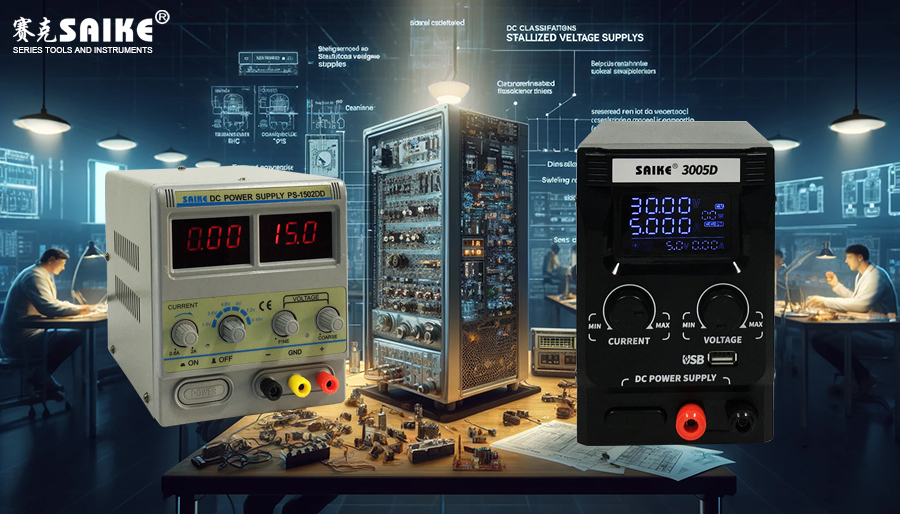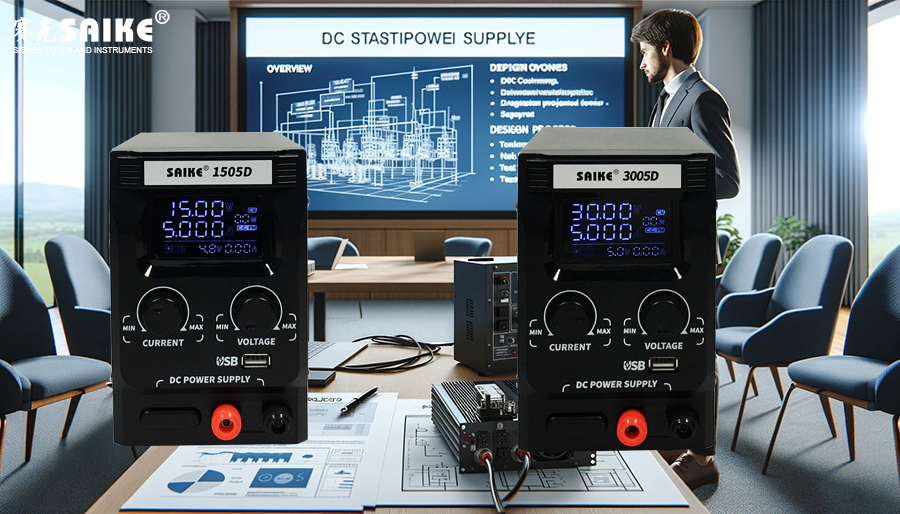
SK-YJ000ZLWYDY-KP 100003
DC stabilized voltage supply is an important component of power technology, widely used in various electronic devices to ensure stable and reliable voltage output. They can be mainly divided into two categories: linear stabilized voltage supplies and switching mode stabilized voltage supplies. Each type of stabilized voltage supply has its unique characteristics and application areas.
I. Linear Stabilized Voltage Supply
1.Basic Working Principle:
– Linear stabilized voltage supplies use transistors (or other similar semiconductor devices) to continuously adjust the output voltage. The transistors work in the linear region to precisely regulate the current.
2.Characteristics:
– Low Noise and Interference: Due to the absence of high-frequency switching, electromagnetic interference is low.
– Simple Design: The circuit structure is relatively simple, facilitating design and maintenance.
– High-Precision Voltage Stabilization: The output voltage is stable, suitable for applications requiring high voltage stability.
– Lower Efficiency: Due to significant thermal losses during voltage regulation by transistors, efficiency is relatively low.
– Large Size and Weight: Larger heat sinks are needed to dissipate excess heat.
3.Applications:
– Power supply for precision instruments, audio equipment, and any applications with strict limitations on power noise and interference.
II. Switching Mode Stabilized Voltage Supply (SMPS)
1.Basic Working Principle:
– SMPS uses high-frequency electronic switches (usually transistors) and energy storage components (inductors, capacitors) to convert voltage. By changing the duty cycle of the switch, energy transfer is controlled, thereby regulating the output voltage.
2.Characteristics:
– High Efficiency: The conversion efficiency is usually between 80% and 90% because the switching components in the power supply only work in fully open or fully closed states, reducing energy losses.
– Small Size and Light Weight: High efficiency reduces cooling requirements, allowing for smaller heat sinks and a more compact design.
– Wide Adjustable Range: It can adapt to a wide range of input voltages and provide multiple output voltages.
– Electromagnetic Interference: High-frequency switching may cause electromagnetic interference, which needs to be mitigated through design.
3.Applications:
– Widely used in computer power supplies, mobile device chargers, industrial power supplies, and any electronic equipment with high space and efficiency requirements.
III. Conclusion
Both linear stabilized voltage supplies and SMPS have their advantages and disadvantages, suitable for different application scenarios. Linear stabilized voltage supplies occupy a place in high-precision applications due to their stability and low-noise performance, while SMPS are widely used in modern electronic products due to their high efficiency and compact design. Choosing the appropriate type of stabilized voltage supply depends on the specific application requirements.


